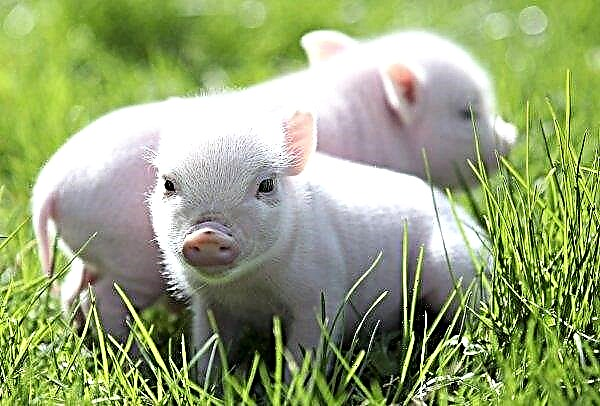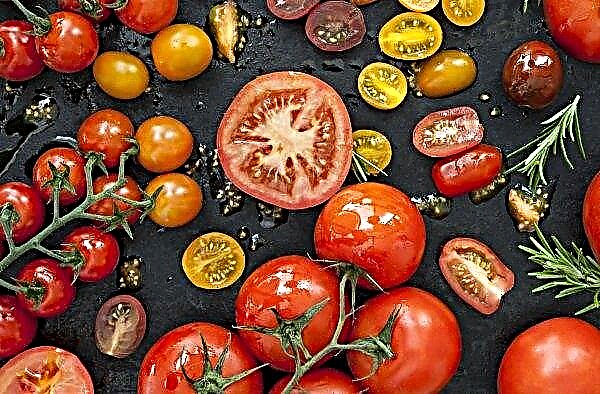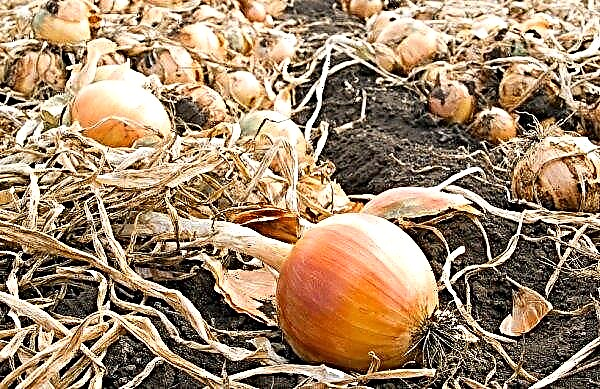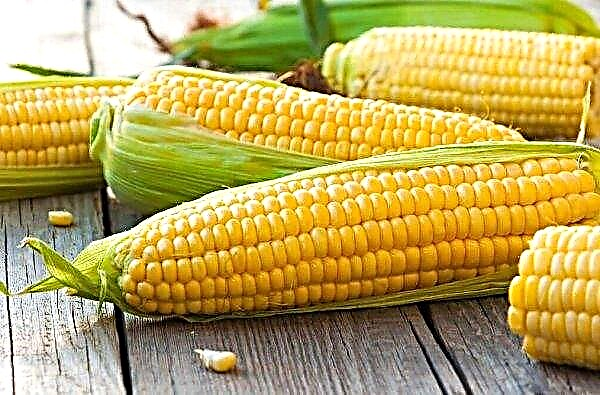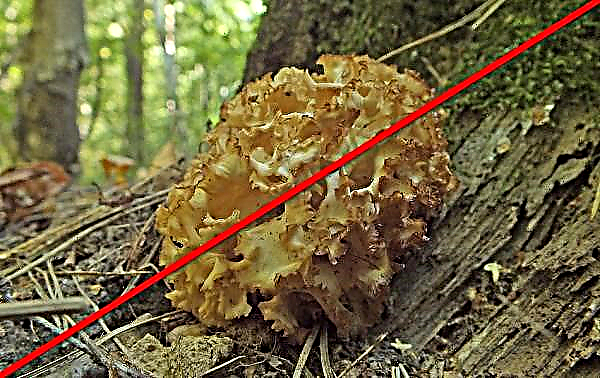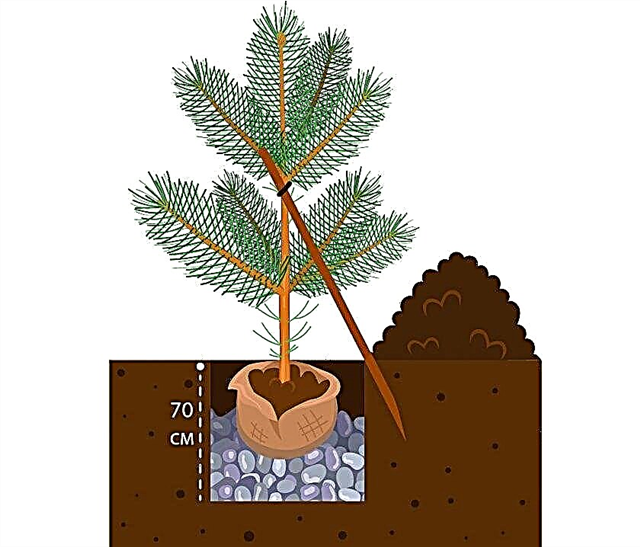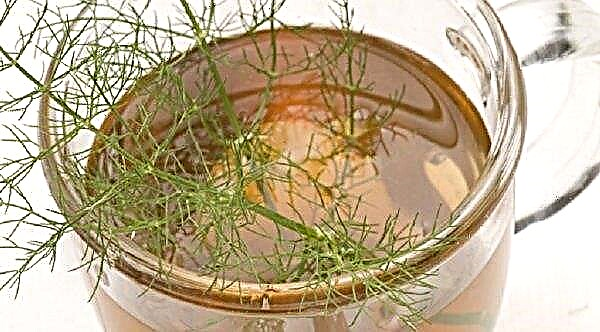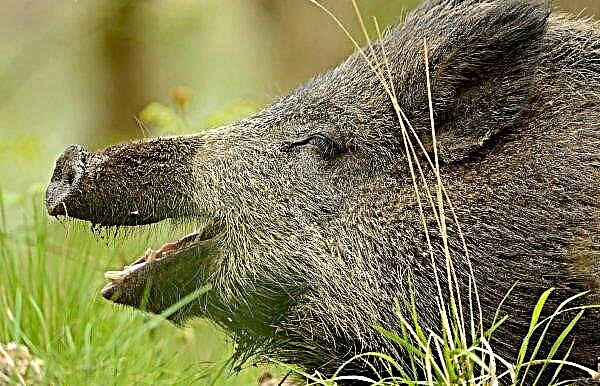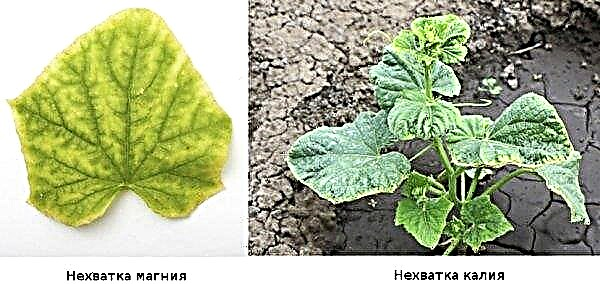Many summer residents, distributing the beds for cultural planting, leave room for little blue ones. Today we will talk about the variety of eggplant Taste of mushrooms, its cultivation and the rules of care.
Description and characteristic
The taste of mushrooms is the merit of Russian breeders who bred a white-skinned variety in the early 2000s. Recommended for cultivation on the territory of the Russian Federation by the State Commission since 2009. The bush is formed from strong stems covered with sparse pile, the size of the bush is up to 70 cm. The foliage is triangular in shape, often whitish. During flowering, white, six-petalled baskets appear. During fruiting, medium-sized fruits are formed in the form of a pear or a cylinder. Under the glossy thin white peel is a creamy flesh.
Did you know? In ancient China, strips of eggplant pulp were used instead of a toothbrush to clean the oral cavity from plaque and bad smell.
After cooking, the taste of the vegetable is pleasant, without a characteristic bitterness, close to the mushroom taste. A short bush does not require a garter and matures early. After sowing seeds, the crop can be harvested after 100 days on average. The crop is stable, more than 6 kg / m², with an average fruit mass of 180 g. The white fruit tolerates transportation well. The taste qualities of eggplant allow it to be used in canning for the winter, both as an independent product, and in salads or mixed vegetables.
Advantages and disadvantages
- According to the reviews of gardeners with experience in growing varieties, it has the following advantages:
- high and friendly germination of seeds;
- does not require garter;
- early ripening;
- resistance to temperature extremes;
- immunity against late blight and rot;
- stable yield;
- transportability;
- great taste.
The disadvantages of Taste of mushrooms include exactingness to the composition of the soil.
Growing Features
In the southern territories, seed planting is practiced, but experienced vegetable growers recommend a seedling method of cultivation. Sowing of seeds is carried out at the end of winter (February) or at the beginning of March. Accordingly, seedlings are transported to the soil in late April, early May. The main conditions for transplanting into open ground are the absence of a threat of return frosts and the soil warmed up to + 15 ° C.
Growing seedlings
Before sowing, the material is disinfected in a slightly pink solution of potassium permanganate, then washed and placed in a solution of "Epina" for 24 hours. Prepared seeds are sown in a soil mixture in a ratio of 6: 3: 1:
Prepared seeds are sown in a soil mixture in a ratio of 6: 3: 1:
- peat;
- humus;
- sand.
To the resulting mixture add wood ash at the rate of 200 g / 10 kg of soil. Eggplants have a superficial, weak root system, so picking is poorly tolerated. Seeds are planted in peat cups. For safety, 3 seeds are sown in one container, deepened by 1-1.5 cm. Subsequently, weak seedlings are removed. For germination, crops are placed in temperature + 25 ... + 28 ° C. The soil is regularly sprayed so that it does not dry out. To ensure a 12-hour daylight use fluorescent lamps. Shoots appear in 10-14 days. After the emergence of seedlings, they are provided with a content at a temperature of + 18 ... + 20 ° C, humidity not more than 70%.
Important! It is recommended to fertilize seedlings immediately after watering so as not to burn the root system.
Seedlings are not recommended to be kept in a draft and near heating appliances. With dry air in the room, spraying the space around the plants is used. Watering is carried out as the top layer of the soil dries, warm not lower than + 20 ° C, water purified by the filter or settled. The seedlings are fed twice a month with the Agricola Forward mineral complex according to the leaf, the solution is prepared: 5 ml / 1 liter of water. 10-14 days before moving to the ground, the seedlings are tempered. Taking to fresh air, gradually increasing the time of detention from 1 hour to a day.
Transplanting to beds
For planting eggplant, you need to take into account the thermophilic and photophilous culture. The site should be illuminated, without close planting of fruit trees or shrubs, protected from drafts. It is not advisable to plant in lowlands where melt and rainwater accumulate. The best precursors for the plant are cabbage, herbs, gourds and legumes. Autumn preparation comes down to digging and cleansing the soil with 5 kg of humus per m². In spring, the plot is leveled with a rake. A bush ready for transplanting has 6–8 strong leaves.
Seedling planting scheme:
- Between the rows leave up to 60 cm, between the holes 35 cm.
- 50 g of wood ash is added to each well and watered.
- The seedling is placed in the pit along with a glass, the peat walls will serve as additional fertilizer.
- Deepen the growth point by 2 cm.
- Having fallen asleep, the plants are watered again.

Plant care
Low bushes do not require garter, which makes it easier to care for them. Keeping the distance between the bushes will provide them with uniform lighting and airing. Further care consists of watering and top dressing. If there is no way to organize drip irrigation, then you need to moisten the culture under the root. The water should be warm (+ 18 ... + 20 ° C), standing, ideally rain. The frequency of watering depends on the amount of rainfall. In dry weather, watering is carried out more often than once every 3 days, during frequent rains as the soil dries.
Check the dryness of the soil 15 cm in depth. After watering, carefully loosen the soil no deeper than 8–10 cm from the surface. Mulching is practiced, especially in hot summers, to protect the roots from overheating and evaporation of moisture.
Important! Irrigation for eggplant can be fatal: drops that remain on the foliage, when evaporated, cause burns.
Feeding scheme:
- First feeding carried out a month after transplantation into open ground, using liquid fertilizer: "azofosku" 40 g / 10 l of water, under a bush of 0.5 l of solution.
- During flowering prepare a mixture of ammonium nitrate (15 g), potassium monosulfate (10 g), superphosphate (30 g), boric acid (5 g) per 10 l of water. Fertilize under the bush of 0.5 l.
- During fruiting and fertilizer, and protection against late blight is a solution of wood ash. The product contains potassium and phosphorus in the composition, which is necessary for the formation of fruits. 400 g of ash are added to a bucket of water (10 l), 0.5 l of the composition is added under the bush.

Pests and diseases
The taste of mushrooms is resistant to major diseases and pests of solanaceous crops. However, difficulties may arise during cultivation: temperature changes or increased rainfall. These factors can trigger the development of fungi or attacks of insects and slugs.
Did you know? A smoker who quits a bad habit can make up for the lack of nicotine in his blood by adding eggplant to his diet. The fetus will not be able to replace a cigarette, but it can support the body in tone.
Methods of combating diseases and pests:
- Powdery mildew - the leaves are covered with white, powder coating. Treatment: spraying with Fundazolum 10 g / 10 l of water, up to 4 procedures with an interval of 14 days.

- Fusarium wilt - the leaves turn yellow, dry, curl. Treatment: spraying with “Gamair” 2 tablets per 1 liter of water, up to 3 procedures with an interval of 7 days.

- Gray or white rot - the green parts of the plant are covered with brown / white coating, the stems gradually soften. Treatment: spraying with 1% solution of copper sulfate or colloidal sulfur.

- Late blight - the upper side of the leaves turns pale, the lower is covered with white coating. Then the bush dries. Treatment: spraying with Anthracnol 10 g / 10 l of water, no more than 3 treatments, with a break of 10-14 days.
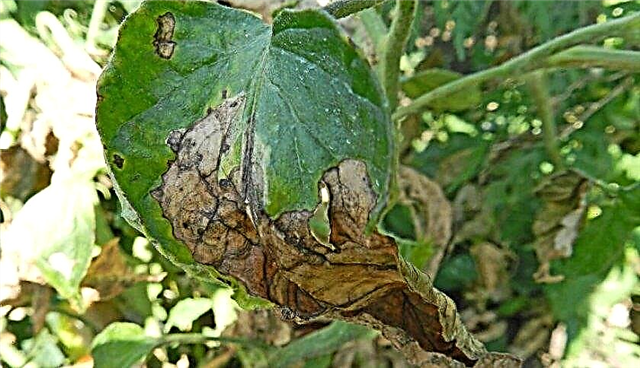
- Aphid - a green or whitish microscopic insect that often settles on the underside of the leaf or in its sinus. On a site from aphids, folk methods are used with timely detection: garlic infusion with soap, infusion of marigolds. In severe cases, Arribo fungicide (1.5 ml / 10 l) is used, sprayed with repeated treatment after 14 days.

- Colorado beetle - The adult specimen and its larvae are dangerous. You can destroy insects by spraying with Tanrek 1 ml / 10 l, up to 2 treatments are carried out with an interval of 20 days.

- Slug - arthropod pests eat leaves and stems, leaving a mucilaginous trail. Mollusks are collected manually to protect the site from their appearance, sprinkle walnut shells on the site, sprayed with infusion of fern.

Harvesting and storage
The fruit ripening in the variety The taste of mushrooms is uneven, long. Harvest can be harvested from August to late autumn. It is recommended that the fruit be harvested as it ripens every 5 days. It is better to remove hard vegetables: they are stored longer. During storage, the fruits reach the stage of full maturity. Gather fruits, cutting off secateurs or a sharp knife, tearing off is not advisable so as not to damage the sepals.
Eggplant is not one of those crops that can be stored all winter. The maximum shelf life in a dry, warm cellar is 1 month. For preservation, specimens with a clean, dense skin, without suspicious stains and damage, are selected. The length of the fruit is preferable 10-12 cm, the stalk is not removed. The taste of mushrooms has earned positive reviews from gardeners. The variety is unpretentious, has early ripening and excellent taste.








